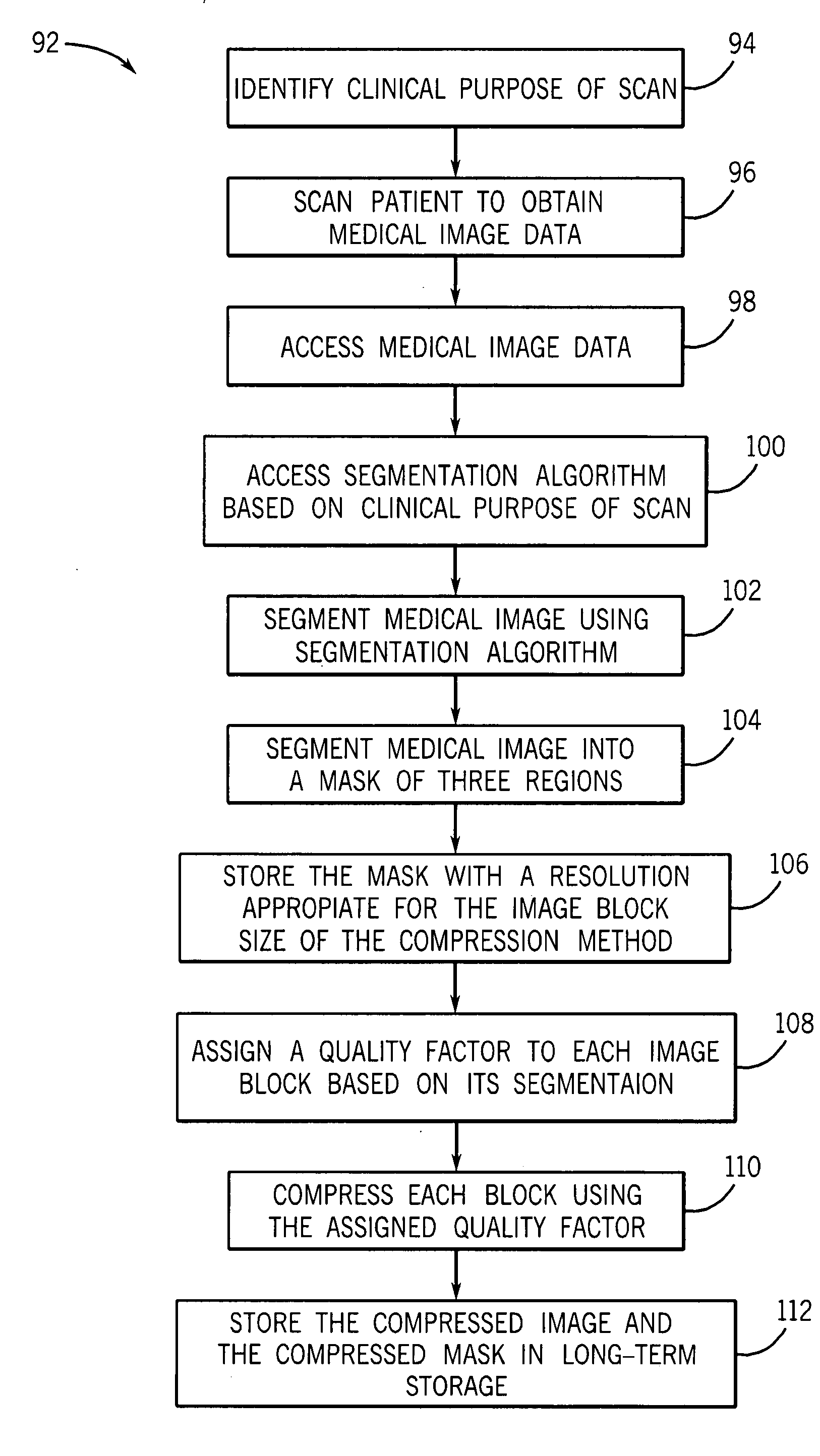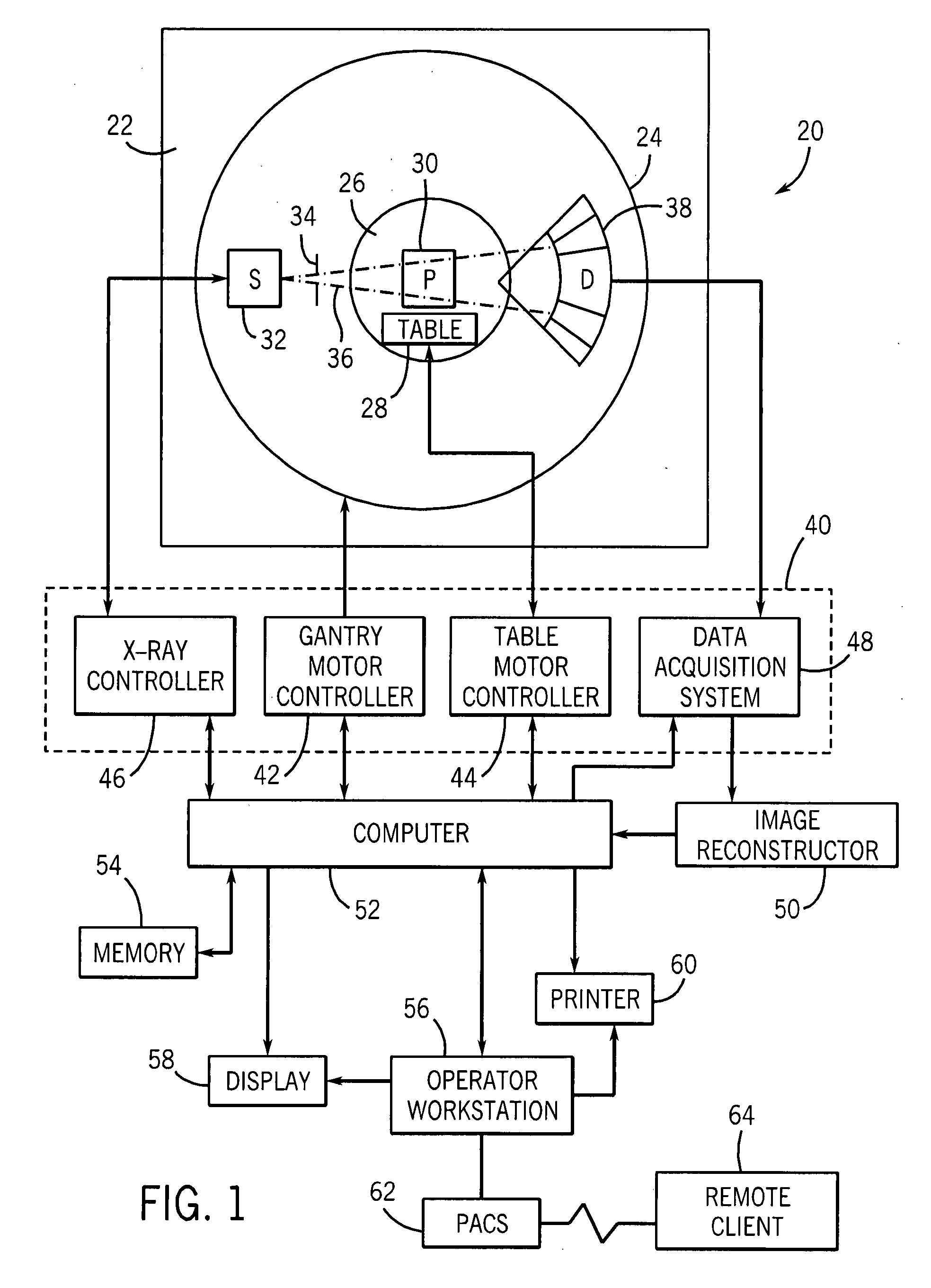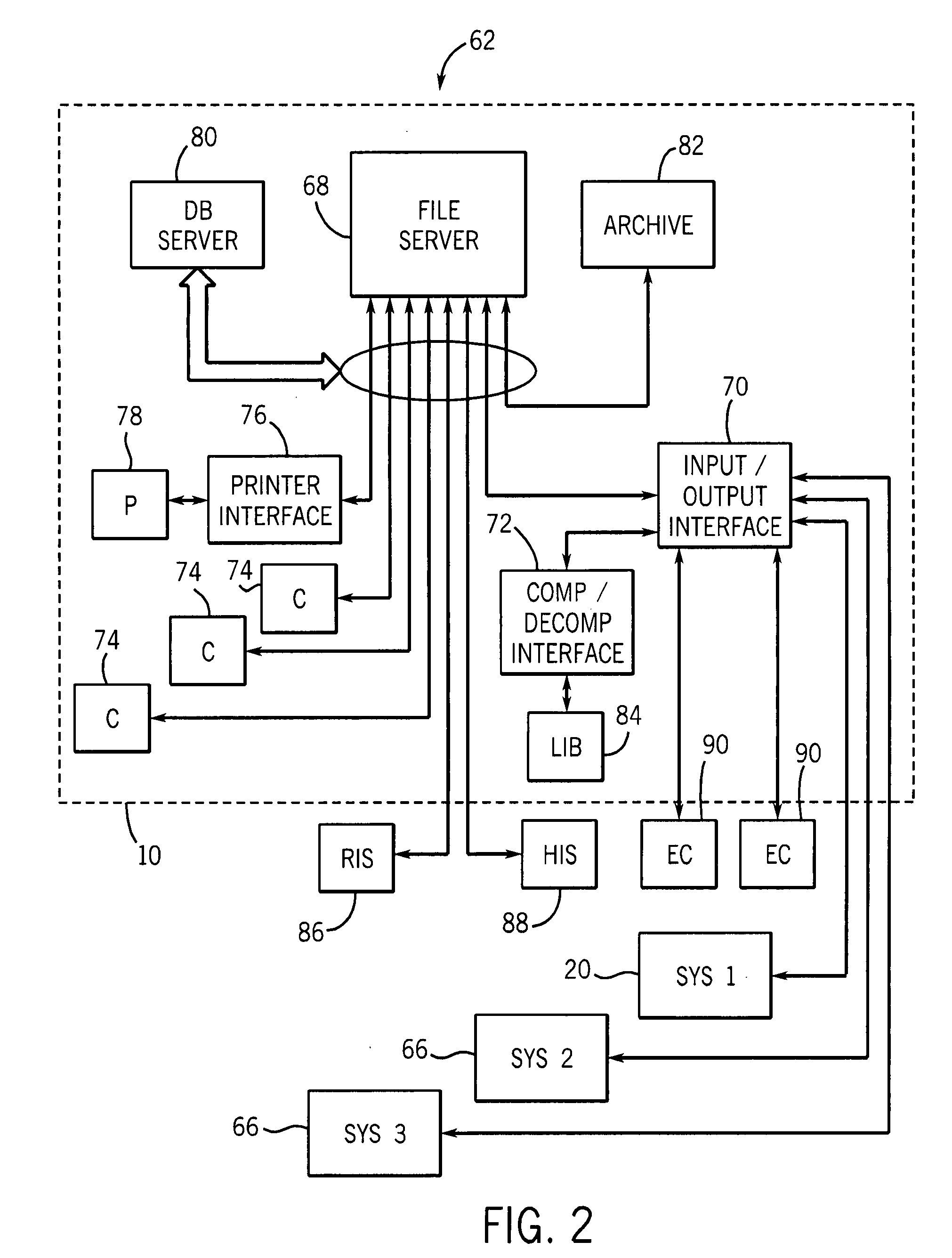Processing of content-based compressed images
a compression image and content technology, applied in the field of medical image data storage, can solve the problems of large image files, occupying considerable disc or storage space, and difficult or time-consuming to transmit large image files from one location to another, and current techniques do not offer sufficient rapid compression and decompression of image files
- Summary
- Abstract
- Description
- Claims
- Application Information
AI Technical Summary
Benefits of technology
Problems solved by technology
Method used
Image
Examples
Embodiment Construction
[0023]Referring now to FIG. 1, the present invention will be described as it might be applied in conjunction with an exemplary imaging system, in this case a computed tomography (CT) imaging system. In general, however, it should be borne in mind that the present techniques may be used with image data produced by any suitable imaging modality. In a typical application, the imaging system may be designed both to acquire original image data and to process the image data for display and analysis is presented. As noted below, however, in certain applications the image data acquisition and subsequent processing (e.g., for the transformations and compression described below) may be carried out in physically separate systems or work stations. The illustrated embodiment of the CT imaging system 20 has a frame 22, a gantry 24, and an aperture (imaging volume or CT bore volume) 26. A patient table 28 is positioned in the aperture 26 of the frame 22 and the gantry 24. The patient table 28 is a...
PUM
 Login to View More
Login to View More Abstract
Description
Claims
Application Information
 Login to View More
Login to View More - R&D
- Intellectual Property
- Life Sciences
- Materials
- Tech Scout
- Unparalleled Data Quality
- Higher Quality Content
- 60% Fewer Hallucinations
Browse by: Latest US Patents, China's latest patents, Technical Efficacy Thesaurus, Application Domain, Technology Topic, Popular Technical Reports.
© 2025 PatSnap. All rights reserved.Legal|Privacy policy|Modern Slavery Act Transparency Statement|Sitemap|About US| Contact US: help@patsnap.com



